5.21 Chapter 5: Questions
Question 1:
Define and briefly describe the difference between a P/E
Ratio and a Forward P/E ratio.
Question 2:
What is the difference between a “Trailing P/E Ratio” and a
“Forward P/E Ratio”?
Question 3: Information
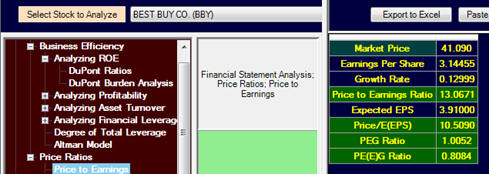
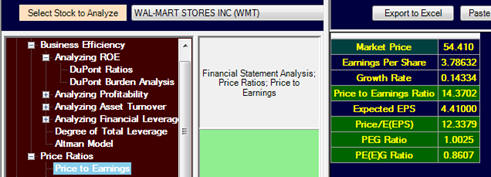
Using the information provided, and by considering
only the Price to
Earnings Ratio (i.e., you should ignore the other information for
this part), which company is valued more highly? Provide brief
reasons in support of your answer.
Question 4:
Using
all of the information
provided for Question 3, which company is valued more highly?
Provide brief reasons in support of your answer.
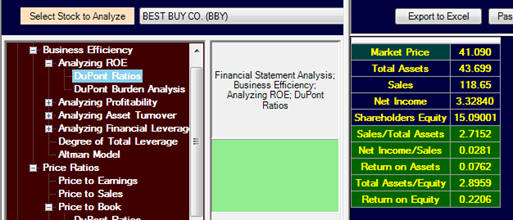
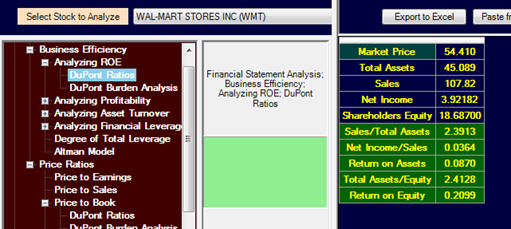
By conducting a DuPont decomposition analysis of
the ROE for Wal-Mart and Best Buy, describe why they are
different. Next, refer
to the information provided for Question 2 in relation to P/E ratios
and PEG ratios. Taking
into account both your ROE analysis and your price ratio analysis
provide a more complete interpretation of the observed price ratios
for Wal-Mart and Best Buy.
In particular, from a relative valuation perspective does one
appear to be overvalued relative to the other?
Provide reasons in support of your answer.
Question 6:
Stock analysts work with
both the bottom line (P/E ratios) and the top line (Price/Sales
ratios). Provide a
brief interpretation of each type of ratio (Price/EPS and
Price/Sales per Share) and discuss the advantages and disadvantage
of each type of ratio.
Information for the next three questions:
In the graphs below the Price to Earnings, Price to Sales and the
Return on Assets is provided for the following four companies:
·
Allegheny Energy (AYE), Purple
·
American Electric Power (AEP) Green,
·
Constellation Energy (CEG), Light Blue
·
Duke Energy Corporation (DUK) Yellow
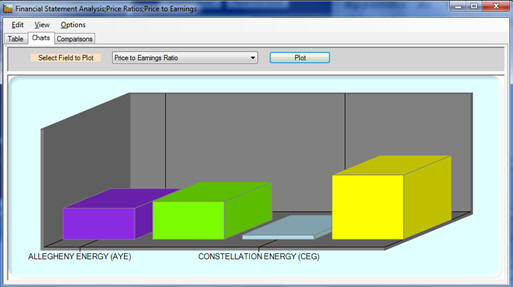
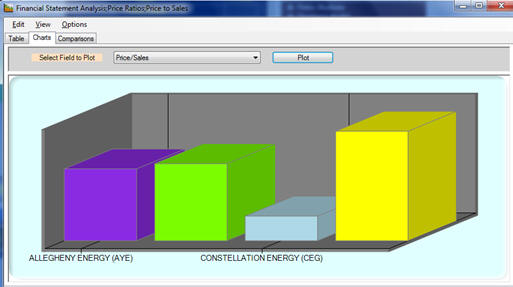
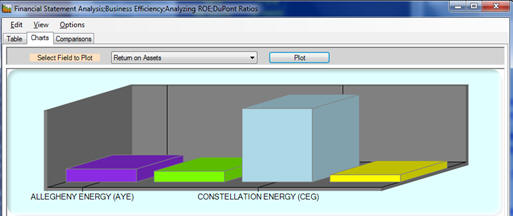
Question 7:
If you were adopting a relative valuation approach using
price ratios, which stock is the highest priced in the market and
which stock is the cheapest?
Provide reasons in support of your answer.
Question 8:
If you were combining relative valuation using price ratios
with an analysis of business ratios (again only referring to the
information provided) which stock would you recommend as the
cheapest to acquire in the market and which is the most expensive?
Provide reasons in support of your answer.
Question 9:
A summary of the findings from the Fama & French 1995 study titled “Size
and Book-to-Market Factors in Earnings and Returns” found that
firms with a very high book-to-market tend to be persistently
distressed stocks (which supported their argument for this being a
“risk factor”).
Note:
Fama and French “Book to Price Ratio” rather than the “Price
to Book Ratio.” This has the advantage of preserving the ranking
when some firms have negative book values.
This same point applies to the P/E ratio, where in
statistical analysis, the “Earnings to Price Ratio is used.
In the graph below, the Price to Book Ratio is provided for
the four stocks:
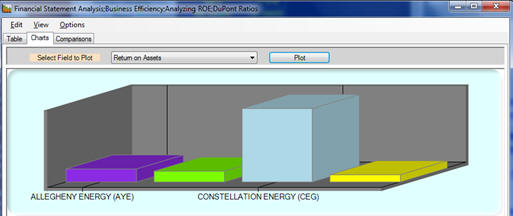
Question 10:
Refer to the following report that appeared on the internet:
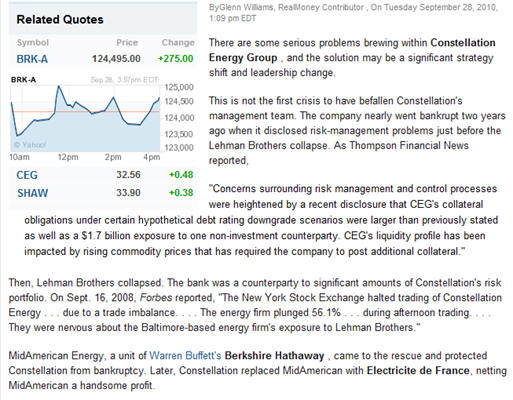
Real World Exercise on Price Ratios
Select two
companies from the Current FTS Dataset that are competitors, or at
least are in the same industry even if they do not directly compete
with each other.
Provide a
summary report of the results from conducting financial statement
analysis of the price ratios for your two stocks relative to each
other. Summarize
how you view the market to be assessing their comparative advantages
and disadvantages for these two stocks relative to this analysis.
In addition, comment on how efficiently the market is
assessing for how each firm is implementing their business
model/business strategy, based upon your analysis of the price
ratios.
